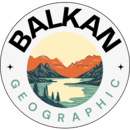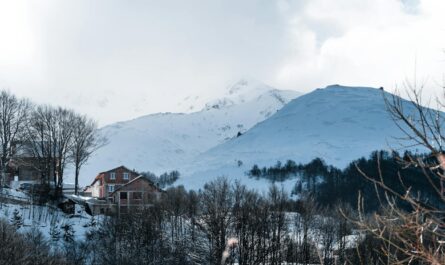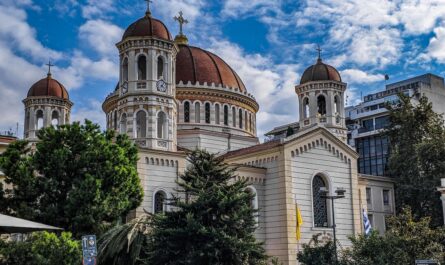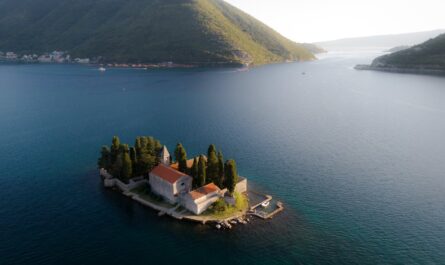Huddled in the Istrian peninsula’s western coast, Rovinj is a vivid town that is an example of Croatia’s most cherished spectacles. The town is very frequently referred to as the ‘Pearl of Adriatic’ and is renowned for its picturesque architecture, vast history, vibrant culture and scenic views that leave one breathless.
The town is very well known for blending the classic with contemporary therefore, offering visitors an extraordinary experience that captures the essence of the Adriatic Coast.
A Brief Insight of Rovinj’s History
Ancient Beginnings
Rovinj’s history can be traced all the way back to the Roman era. Its original name was Ruvinium. The town was actually a small port and trading settlement. Its location alongside the Adriatic Coast was what made it a hub for maritime trade along with different military operations.
With the passage of centuries, Rovinj was influenced by numerous changing powers such as Ostrogoths and Byzantines. Each era differently influenced the town therefore, impacting its development.
In the 13th century, the most crucial chapter in the town’s history began as it became part of the Venetian Republic. The rule continued for more than 500 years and Rovinj flourished during this period.
During the 18th century, Rovinj experienced the fall of Venetian republic and it became a part of the Austrian Empire. This period was marked by a period of peak infrastructural development. Rovinj then continued to grow as a commercial center.
Architectural Marvels of Rovinj
The Old Town of Rovinj is a complex made out of cobblestone streets, gorgeous squares, and alleyways that take the visitors all the way back in time. The highlight of Rovinj is its well-preserved medieval architecture along with the vibrant buildings that exude a rustic charm.
In the Old Town, one conspicuous feature is the Church of St. Euphemia. This was built in the 18th century and is dedicated to the town’s patron saint. The bell tower in the Church is actually a view point that offers a glimpse of the Adriatic Sea along with the panoramic views on Rovinj itself. This is considered as a must visit if you are in Rovinj.
The Venetian Architecture
The Venetian influence is visible throughout Rovinj. From its narrow streets to the arched windows, everything is a visible reflection of the Gothic and Renaissance styles that were commonly seen during the Venetian rule. Some very prominent example includes the Town Hall and the Baroque Palace of Batana House.
The Contemporary Additions
Although Rovinj’s historical charm is very well preserved, it hasn’t shied away from embracing the modernity. The contemporary touch in the form of art galleries, exquisite cafes, boutique shops all mix in seamlessly with the classical and historic backgrounds. The interchange between classic and new is what has attracted the visitors and made the Rovinj’s atmosphere unique and dynamic.
Rovinj’s Natural Beauty and the Outdoor Activities
The natural beauty along with the scenic views is what has compelled the tourists for so long. The town is surrounded by the crystal-clear waters of the Adriatic Sea. On the other hand, the coastline adjoined with Rovinj is a host to sandy beaches, coves and rocky outcrops that offer ample options for one to relax and unwind.
Among the most famous spots for swimming is the Punta Corrente. It is a park that stretches throughout the coast. The visitors can enjoy multiple activities here such as the blue waters, lovely picnic areas and walking trails. The park has a diverse flora and fauna that make it a retreat for those who admire nature.
Rovinj’s Nearby Islands
Another reason why Rovinj is so loved are the nearby islands that are very easily accessible by boat. The Archipelago further has numerous small islands each exuding its own individual charm. The biggest out of these islands is the Sveti Andrija also known as St. Andrew. It is dotted with historic lighthouses and provides remarkable views of the surrounding seascape.
The waters that surround Rovinj have a marine life that makes them renowned. In addition to this, it is also a preferred snorkeling and diving destination. You will find colorful and unique fish and intriguing rock formations underwater. Diving is a whole different yet memorable experience where one can find submerged caves and shipwrecks.
Hiking and Biking
If you are an individual who would rather go for land-based activities, then Rovinj has the opportunities for you. The nearby countryside has olive groves and vineyards along with slanted hills that offer the perfect backdrop for outdoor adventures.
Lim Fjord is a natural bay that is popular for its tranquil waters and substantial cliffs. This provides an ideal environment for hiking and exploring.
Cultural Significance and Events
Rovinj has a calendar that is filled with festivals and events. The town’s culture is celebrated through festivals that tend to showcase cuisine, dance and music.




